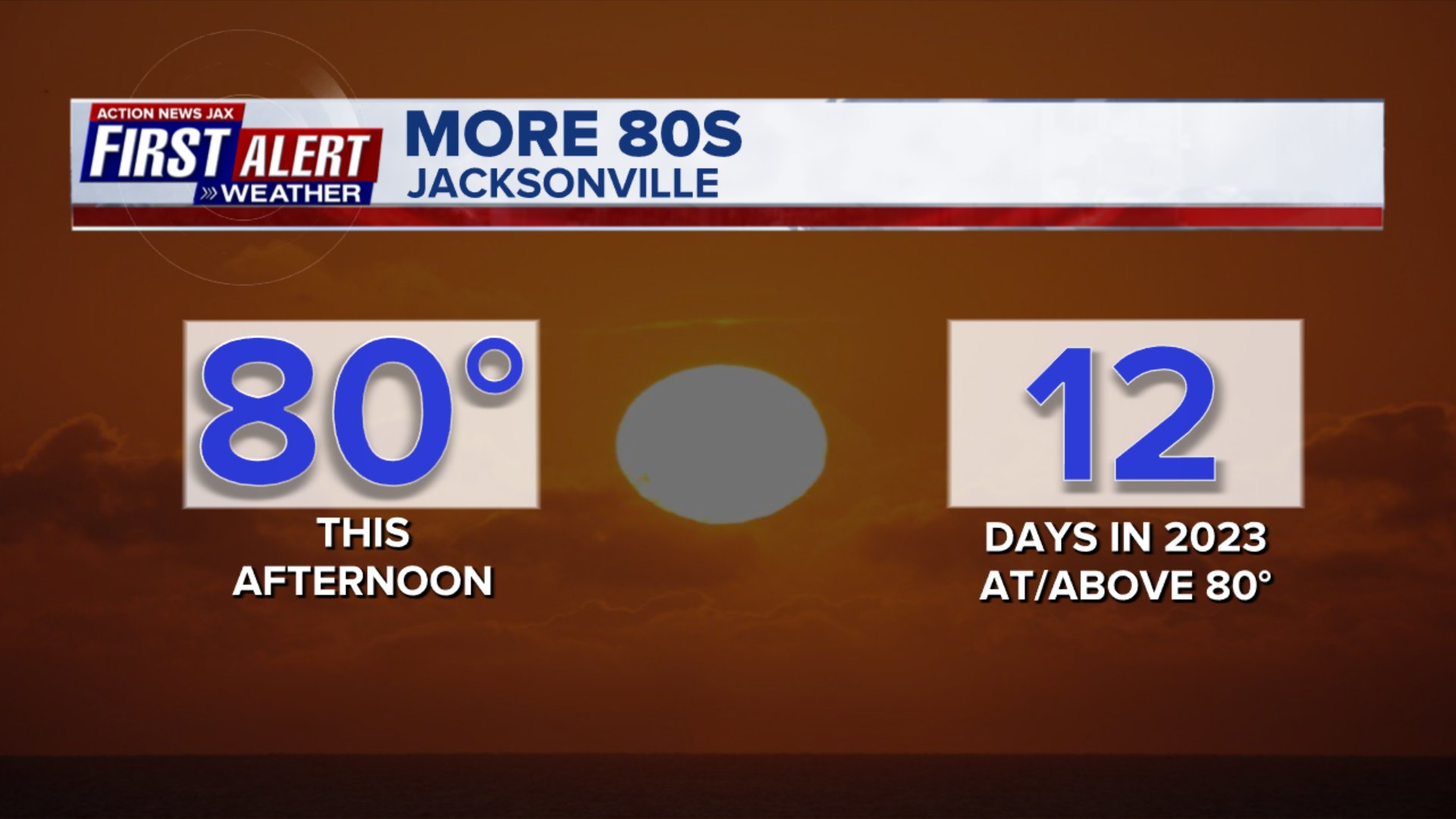Jacksonville, FL — We’re getting to that time of year - the average date of the last freeze for the winter/early spring. It’s not uncommon (about 50% of the time) to still get a light freeze into mid March but becomes particularly rare once to the last week of March into April (latest on record for Jacksonville is April 8, 2007).
The average date of the last freeze of winter/early spring for winter/early spring @actionnewsjax @wokvnews #FirstAlertWx pic.twitter.com/o0Xwj73o5A
— Mike Buresh (@MikeFirstAlert) February 15, 2023
While there have been some pretty intense cold spells (Dec.) this winter, there have been some warm spells too (wide range in temps. including hard freezes are rather common place for NE Fl./SE Ga. during a La Nina - [cooling of the equatorial Pacific]). Since Jan. 1 through Feb. 15th, there have been 12 80-degree days which - over the last 10 years - is tied with 2020 for the most such days. Since 2013, the number of 80 degree days through the first 6 weeks of the year:
2013: 10 days
2014: 2 days
2015: 1 day
2016: 3 days
2017: 10 days
2018: 5 days
2019: 7 days
2020: 12 days
2021: 2 days
2022: 4 days
Night skies from “Sky & Telescope”:
Feb. 21 (dusk): The thin, waxing lunar crescent hangs 6° below Venus in the west, while Jupiter gleams to their upper left.
Feb. 22 (dusk): A slightly fatter crescent Moon sits about 1° to Jupiter’s left.
Feb. 26 (evening): Go out early to see Jupiter and Venus less than 3° apart, low in the west. Higher up, the first-quarter Moon sits between the Pleiades and Hyades in Taurus.
Feb. 27 (evening): The Moon, just past first quarter, is 1° (or less) from Mars.
Feb. 28 (dusk): Jupiter and Venus are only 1° apart in the west-southwest. The sight will become more impressive as twilight deepens.
Mar. 1 (dusk): Look westward after sunset to spot brilliant Venus and dimmer Jupiter a mere ½° apart. Stunning!
Mar. 2 (evening): High in the southeast, the waxing gibbous Moon is about 1½° from Pollux, Gemini’s brightest star.
Mar. 5 (evening): The slightly fatter Moon is in Leo, the Lion, 4° or less left of Regulus.
Moon Phases:
Full Moon Feb. 5 1:29 p.m. EST (Snow Moon)
Last Quarter Feb. 13 11:01 a.m. EST
New Moon Feb. 20 2:06 a.m. EST
First Quarter Feb. 27 3:06 a.m. EST
I often hear “it’s windier now than it ever used to be”. Real-time research suggests otherwise. And where it has been windier (1950-2023), the difference is less than 1 mph.
©2023 Cox Media Group
:quality(70)/cloudfront-us-east-1.images.arcpublishing.com/cmg/4BY52YP3URHB3CBG6342FEUNGQ.jpg)


:quality(70)/d1hfln2sfez66z.cloudfront.net/04-24-2024/t_d73855398dca4bf5a6e1eca4fedb0fdd_name_file_960x540_1200_v3_1_.jpg)
:quality(70)/d1hfln2sfez66z.cloudfront.net/04-25-2024/t_6708df192ad447aabcf5b5aa3616cc76_name_file_960x540_1200_v3_1_.jpg)
:quality(70)/d1hfln2sfez66z.cloudfront.net/04-26-2024/t_e1c14cbb11b5404e9130e1284c8af083_name_file_960x540_1200_v3_1_.jpg)
:quality(70)/cloudfront-us-east-1.images.arcpublishing.com/cmg/NGMKLAKH5NF27JQOAGV7JN25OU.jpg)
:quality(70)/cloudfront-us-east-1.images.arcpublishing.com/cmg/7CGTFGZFDVC5JDOBQ4SVBP3WBA.jpg)